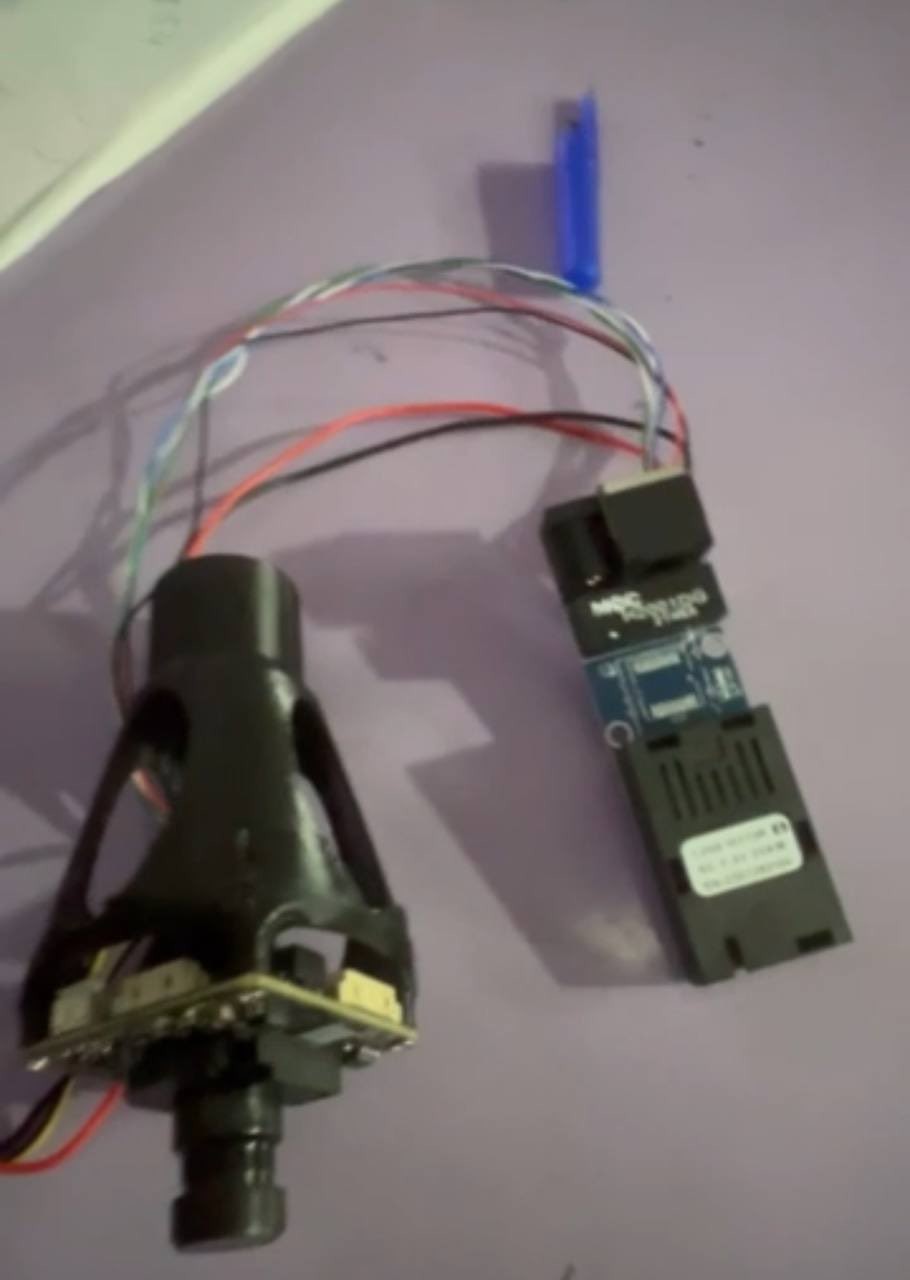Recently, evidence has emerged suggesting that Russian forces in Ukraine are experimenting with a novel approach to drone warfare: wire-guided first-person view (FPV) kamikaze drones. This innovative configuration utilizes a physical fiber optic line for control, offering immunity to radiofrequency electronic warfare (EW) at the expense of certain operational limitations.
Serhii Flesh, a Ukrainian servicemember recognized for his expertise in radio technologies, shared images of the purported wire-guided FPV drone on Telegram. The drone was subsequently handed over to the Birds of Magyar, a Ukrainian drone unit, for further analysis.
The images revealed a spool of fiber optic cable, capable of extending over 10 kilometers, connected directly to the drone’s control section. This configuration is a significant departure from traditional wireless control methods employed in most FPV drones. The drone itself appears to be a commercially available quadcopter, similar to those commonly used by both Russian and Ukrainian forces, equipped with a warhead derived from an RPG-7 rocket-propelled grenade launcher. These FPV drones are designed to be flown directly into a target, detonating on impact.
The effectiveness of FPV drones in the Ukrainian conflict is well-documented, particularly against armored vehicles. However, their reliance on wireless control links presents a vulnerability to electronic warfare. Both sides have increasingly deployed EW jammers to disrupt these links, creating a need for alternative control methods.
Jammers work by interfering with the radio signal between the drone and its operator. This disruption is exacerbated by line-of-sight limitations as the drone approaches its target, especially in complex terrain or urban environments. A fiber optic tether circumvents these issues, providing a secure and interference-free control pathway.
The concept of wire-guided weaponry is not new. Wire-guided anti-tank missiles, such as the American-made TOW missile (Tube-launched, Optically-tracked, Wire-guided), have been in service for decades. Some modern anti-tank missiles, including certain variants of Israel’s Spike, also utilize fiber optic cables for enhanced control and data transmission. Similarly, many torpedoes employ a spooling wire command-link concept.
Flesh also pointed out that the fiber optic link could facilitate faster data transmission, enabling higher-quality video feeds from the drone to the operator.
Another key advantage of wire-guided FPV drones lies in their stealth capabilities. Unlike wireless drones, they do not emit radiofrequency energy, making them undetectable by electronic surveillance systems. This eliminates the risk of the operator’s position being triangulated and targeted.
Furthermore, the absence of radio components may simplify production and reduce costs, particularly when those components are in short supply. This could be a significant advantage in a protracted conflict.
However, the use of a physical tether also introduces several limitations. The maneuverability of FPV drones is a key factor in their effectiveness. A fiber optic line, especially one extending over long distances, could easily become entangled in obstacles, limiting the drone’s ability to navigate complex environments. This is particularly relevant considering that wire-guided anti-tank missiles are typically deployed with a clear line of sight to the target. The tether could also restrict the drone’s effective range and complicate recovery operations.
Wire-guided FPV drones would likely be most effective in relatively open terrain with established areas of control. This would allow for careful mapping of obstacles and precise targeting. They could also be employed in short-range, direct attacks or as near-distance loitering munitions. Tactics that involve the drone maintaining a higher altitude before diving on its target would also be well-suited to this type of weapon.
The emergence of wire-guided FPV drones in Ukraine underscores the growing importance of unmanned systems in modern warfare. Both Russia and Ukraine are investing heavily in drone technology, recognizing its potential to reshape the battlefield. This innovation highlights the rapid pace of development in drone capabilities, countermeasures, and counter-countermeasures.
Drones, including weaponized commercial models, have become a significant threat. The conflict in Ukraine has demonstrated the devastating potential of FPV drones, driving demand for anti-drone defenses worldwide. These defenses are needed not only on land but also at sea and in the air.
The appearance of wire-guided kamikaze drones is a testament to the evolving nature of this threat and the constant need for innovation in both offensive and defensive capabilities.
In conclusion, the wire-guided drone represents an innovative attempt to overcome the limitations of traditional FPV drone technology. While it presents unique advantages such as immunity to electronic warfare and enhanced stealth, it also introduces new challenges related to maneuverability and operational constraints. The future of this technology remains to be seen, but its emergence highlights the ongoing evolution of drone warfare and the constant search for new and effective solutions.

